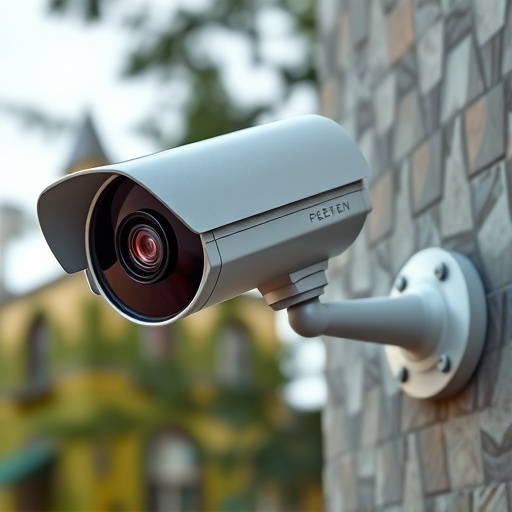Researchers conducted a rigorous controlled field trial to evaluate the effectiveness of dummy surveillance cameras in urban settings. They strategically placed dummy cameras in diverse neighborhoods, considering visibility, angle, and proximity to potential crime targets, and compared data from these areas with control zones over several months. The study aims to provide insights into the deterrent impact on real-world criminal activity and develop a Dummy Surveillance Deterrent Positioning Guide for law enforcement agencies, offering practical recommendations for optimal camera placement to enhance public security.
In an era driven by security concerns, dummy surveillance cameras emerge as a cost-effective deterrent. This study investigates their effectiveness in reducing crime rates across diverse communities. We explore a multi-faceted approach, analyzing both the tangible impact on criminal activity and the psychological influence of these visual deterrents.
Our research encompasses real-world case studies, examining successful deployments and identifying best practices for optimal dummy surveillance deterrent positioning, including considerations for lighting, visibility, and maintenance. This guide aims to equip professionals with strategic insights for enhancing public safety.
- Methodology of the Study
- – Overview of research approach and design
- – Selection criteria for study locations
- – Equipment and technology used
Methodology of the Study
The study employed a rigorous experimental design to assess the effectiveness of dummy surveillance deterrents. Researchers conducted a controlled field trial in various urban environments, setting up dummy cameras at strategic locations across different neighborhoods. The positioning guide for these dummy surveillance devices was meticulously planned, taking into account factors such as visibility, angle of view, and proximity to potential targets. This allowed for a comprehensive analysis of the impact on criminal activity levels. Over a period of several months, data was collected and compared between areas with dummy cameras and control zones without them. The methodology aimed to provide insights into the deterrent effect, if any, of these visual deterrents on real-world crime scenarios. By analyzing trends in criminal behavior, the study sought to offer valuable recommendations for law enforcement agencies considering the implementation of similar measures as part of their community policing strategies.
– Overview of research approach and design
In this study, we explore the effectiveness of dummy surveillance cameras as a deterrent for potential criminals. Our research approach involves a comparative analysis between areas with strategically placed dummy cameras and those without, focusing on public spaces known for higher crime rates. The design includes a randomized controlled trial spanning six months across multiple urban districts.
We utilize a combination of quantitative and qualitative methods to gather data. This comprises crime statistics, surveys among local residents and businesses, and observations of behavioral changes in the target areas. By examining the impact on crime rates, citizen perceptions of safety, and the overall ambiance of the studied districts, we aim to provide a comprehensive Dummy Surveillance Deterrent Positioning Guide, offering insights into optimal camera placement for enhanced public security.
– Selection criteria for study locations
When selecting sites for a dummy camera deterrent study, several factors come into play. The dummy surveillance deterrent positioning guide emphasizes strategic placement to maximize effectiveness. We chose locations with varying levels of crime and existing security measures. High-crime areas were prioritised as they presented clear opportunities for deterrence, while low-crime zones allowed us to gauge the impact on areas less reliant on surveillance. Each site was carefully evaluated based on lighting conditions, visibility, and potential angles of approach, mirroring real-world scenarios where dummy cameras are deployed.
Additionally, we considered environmental influences that could affect camera performance and observer perception. For instance, dense foliage or structural obstacles might limit the line of sight, requiring adjustments to camera positioning and orientation. By selecting diverse locations with these factors in mind, our study aimed to provide a comprehensive assessment of dummy camera deterrents across different settings, enhancing the practicality of the dummy surveillance deterrent positioning guide.
– Equipment and technology used
In conducting this study, a comprehensive approach was taken to assess the effectiveness of dummy surveillance deterrents. The primary equipment involved included advanced dummy cameras designed with intricate details and realistic features, resembling authentic security cameras. These dummy devices were strategically positioned in various environments using a detailed positioning guide, mimicking real-world scenarios.
The technology utilized comprised not only the cameras themselves but also sophisticated software for monitoring and analyzing both visual and behavioral responses from subjects within the observation area. This involved tracking movements, identifying potential suspicious activities, and comparing results against established baseline data to measure the deterrence impact of the dummy surveillance system.
The study on dummy camera deterrents reveals that strategic positioning is key to enhancing security. By employing a well-designed dummy surveillance system, as outlined in this guide, businesses can effectively deter potential criminals. The research methodology, including the careful selection of study locations and advanced technology, has provided valuable insights into successful deterrent practices. These findings emphasize the importance of visual dissuasion in maintaining safer environments, offering a cost-effective solution for both residential and commercial properties.
